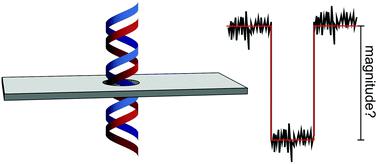当前位置:
X-MOL 学术
›
Chem. Soc. Rev.
›
论文详情
Our official English website, www.x-mol.net, welcomes your
feedback! (Note: you will need to create a separate account there.)
Understanding and modelling the magnitude of the change in current of nanopore sensors
Chemical Society Reviews ( IF 40.4 ) Pub Date : 2022-06-24 , DOI: 10.1039/d1cs00972a Wenxian Tang 1 , Jasper P Fried 1 , Richard D Tilley 1, 2 , J Justin Gooding 1
Chemical Society Reviews ( IF 40.4 ) Pub Date : 2022-06-24 , DOI: 10.1039/d1cs00972a Wenxian Tang 1 , Jasper P Fried 1 , Richard D Tilley 1, 2 , J Justin Gooding 1
Affiliation

|
Nanopores are promising sensing devices that can be used for the detection of analytes at the single molecule level. It is of importance to understand and model the current response of a nanopore sensor for improving the sensitivity of the sensor, a better interpretation of the behaviours of different analytes in confined nanoscale spaces, and quantitative analysis of the properties of the targets. The current response of a nanopore sensor, usually called a resistive pulse, results from the change in nanopore resistance when an analyte translocates through the nanopore. This article reviews the theoretical models used for the calculation of the resistance of the nanopore, and the corresponding change in nanopore resistance due to a translocation event. Models focus on the resistance of the pore cavity region and the access region of the nanopore. The influence of the sizes, shapes and surface charges of the translocating species and the nanopore, as well as the trajectory that the analyte follows are also discussed. This review aims to give a general guidance to the audience for understanding the current response of a nanopore sensor and the application of this class of sensor to a broad range of species with the theoretical models.
中文翻译:

理解和模拟纳米孔传感器电流变化的幅度
纳米孔是有前途的传感装置,可用于检测单分子水平的分析物。了解和模拟纳米孔传感器的电流响应对于提高传感器的灵敏度、更好地解释不同分析物在受限纳米级空间中的行为以及目标特性的定量分析具有重要意义。纳米孔传感器的电流响应,通常称为电阻脉冲,是由分析物易位通过纳米孔时纳米孔电阻的变化引起的。本文回顾了用于计算纳米孔电阻的理论模型,以及由于易位事件导致的纳米孔电阻的相应变化。模型侧重于孔腔区域和纳米孔通路区域的电阻。还讨论了易位物质和纳米孔的尺寸、形状和表面电荷的影响,以及分析物遵循的轨迹。本综述旨在为观众提供一般指导,以了解纳米孔传感器的当前响应以及此类传感器在理论模型中应用于广泛的物种。
更新日期:2022-06-24
中文翻译:

理解和模拟纳米孔传感器电流变化的幅度
纳米孔是有前途的传感装置,可用于检测单分子水平的分析物。了解和模拟纳米孔传感器的电流响应对于提高传感器的灵敏度、更好地解释不同分析物在受限纳米级空间中的行为以及目标特性的定量分析具有重要意义。纳米孔传感器的电流响应,通常称为电阻脉冲,是由分析物易位通过纳米孔时纳米孔电阻的变化引起的。本文回顾了用于计算纳米孔电阻的理论模型,以及由于易位事件导致的纳米孔电阻的相应变化。模型侧重于孔腔区域和纳米孔通路区域的电阻。还讨论了易位物质和纳米孔的尺寸、形状和表面电荷的影响,以及分析物遵循的轨迹。本综述旨在为观众提供一般指导,以了解纳米孔传感器的当前响应以及此类传感器在理论模型中应用于广泛的物种。











































 京公网安备 11010802027423号
京公网安备 11010802027423号